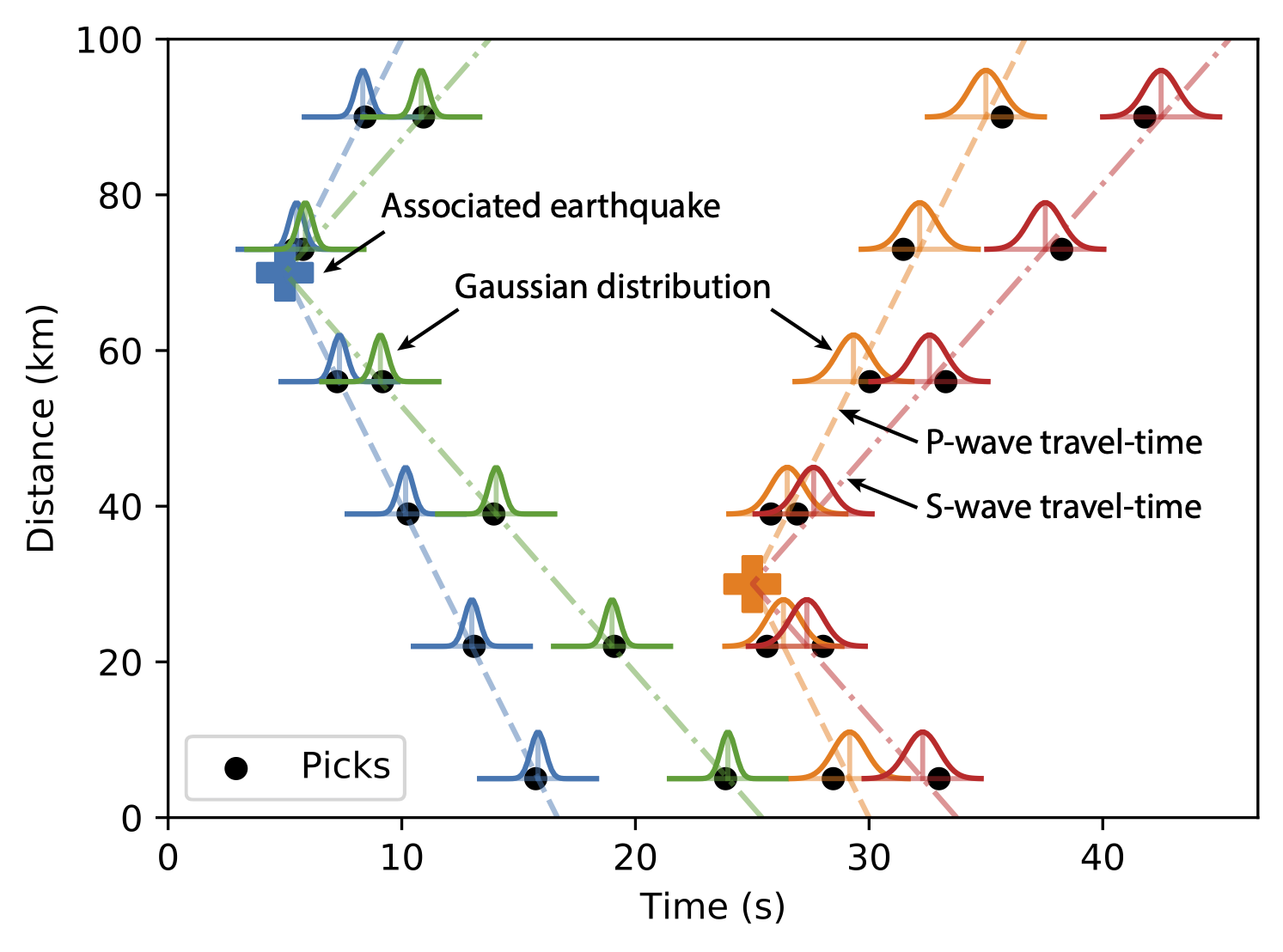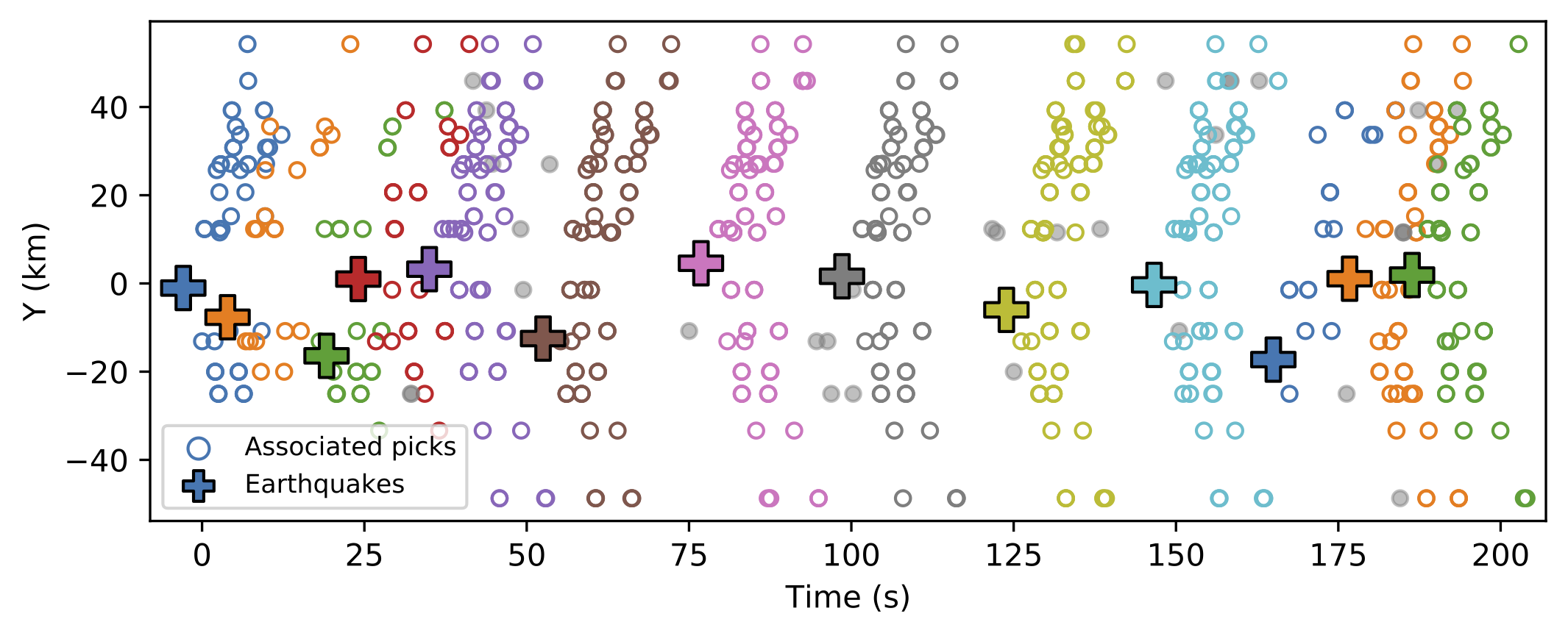https://github.com/AI4EPS/GaMMA
GaMMA: Earthquake Phase Association using a Bayesian Gaussian Mixture Model
https://github.com/AI4EPS/GaMMA
Last synced: 4 months ago
JSON representation
GaMMA: Earthquake Phase Association using a Bayesian Gaussian Mixture Model
- Host: GitHub
- URL: https://github.com/AI4EPS/GaMMA
- Owner: AI4EPS
- License: mit
- Created: 2020-11-30T22:10:02.000Z (over 4 years ago)
- Default Branch: master
- Last Pushed: 2024-11-11T23:32:37.000Z (6 months ago)
- Last Synced: 2024-11-12T00:27:26.312Z (6 months ago)
- Language: Jupyter Notebook
- Homepage:
- Size: 27.6 MB
- Stars: 76
- Watchers: 7
- Forks: 31
- Open Issues: 10
-
Metadata Files:
- Readme: docs/README.md
- License: LICENSE
Awesome Lists containing this project
- awesome-seismology - GaMMA - Gaussian Mixture Model Associator.  (Phase picking and association)
README
# [*GaMMA*: *Ga*ussian *M*ixture *M*odel *A*ssociator](https://ai4eps.github.io/GaMMA)
[](https://ai4eps.github.io/GaMMA)
[](https://ai4eps.github.io/GaMMA)
## 1. Install
```bash
pip install git+https://github.com/wayneweiqiang/GaMMA.git
```
The implementation is based on the [Gaussian mixture models](https://scikit-learn.org/stable/modules/mixture.html#gmm) in [scikit-learn](https://scikit-learn.org/stable/index.html)
## 2. Related papers
- Zhu, Weiqiang et al. "Earthquake Phase Association using a Bayesian Gaussian Mixture Model." (2021)
- Zhu, Weiqiang, and Gregory C. Beroza. "PhaseNet: A Deep-Neural-Network-Based Seismic Arrival Time Picking Method." arXiv preprint arXiv:1803.03211 (2018).

## 3. Examples
- Hyperparameters:
- **use_amplitude** (default = True): If using amplitude information.
- **vel** (default = {"p": 6.0, "s": 6.0 / 1.75}): velocity for P and S phases.
- **use_dbscan**: If using dbscan to cut a long sequence of picks into segments. Using DBSCAN can significantly speed up associaiton using small windows.
- **dbscan_eps** (default = 10.0s): The maximum time between two picks for one to be considered as a neighbor of the other. See details in [DBSCAN](https://scikit-learn.org/stable/modules/generated/sklearn.cluster.DBSCAN.html)
- **dbscan_min_samples** (default = 3): The number of samples in a neighborhood for a point to be considered as a core point. See details in [DBSCAN](https://scikit-learn.org/stable/modules/generated/sklearn.cluster.DBSCAN.html)
- **oversampling_factor** (default = 10): The initial number of clusters is determined by (Number of picks)/(Number of stations)/(Inital points) * (oversampling factor).
- **initial_points** (default=[1,1,1] for (x, y, z) directions): Initial earthquake locations (cluster centers). For a large area over 10 degrees, more initial points are helpful, such as [2,2,1].
- **covariance_prior** (default = (5, 5)): covariance prior of time and amplitude residuals. Because current code only uses an uniform velocity model, a large covariance prior can be used to avoid splitting one event into multiple events.
- Filtering low quality association
- **min_picks_per_eq**: Minimum picks for associated earthquakes. We can also specify minimum P or S picks:
- **min_p_picks_per_eq**: Minimum P-picks for associated earthquakes.
- **min_s_picks_per_eq**: Minimum S-picks for associated earthquakes.
- **max_sigma11**: Max phase time residual (s)
- **max_sigma22**: Max phase amplitude residual (in *log* scale)
- **max_sigma12**: Max covariance term. (Usually not used)
Note the association speed is controlled by **dbscan_eps** and **oversampling_factor**. Larger values are preferred, but at the expense of a slower association speed.
- Synthetic Example

- Example using [PhaseNet](https://wayneweiqiang.github.io/PhaseNet/) picks
See details in the [notebook](https://github.com/wayneweiqiang/GaMMA/blob/master/docs/example_phasenet.ipynb): [example_phasenet.ipynb](example_phasenet.ipynb)
- Example using [Seisbench](https://github.com/seisbench/seisbench)
See details in the [notebook](https://github.com/seisbench/seisbench/blob/main/examples/03c_catalog_seisbench_gamma.ipynb): [example_seisbench.ipynb](example_seisbench.ipynb)

More examples can be found in the earthquake detection workflow -- [QuakeFlow](https://ai4eps.github.io/QuakeFlow/)